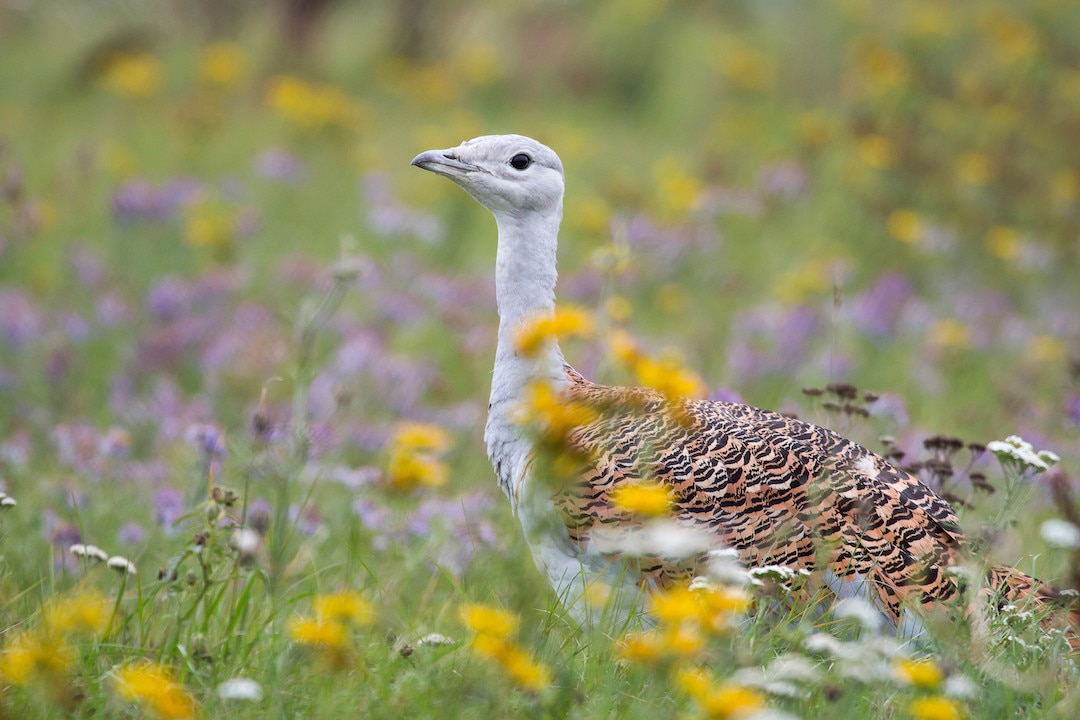Create a free profile to get unlimited access to exclusive videos, sweepstakes, and more!
No prescription required: The world's heaviest flying birds self medicate with plants
They're only ten million years away from copays and private insurance.

The 2019 Academy Award winning film Parasite follows the exploits of the South Korean Kim family as they latch onto the wealthier Park family. Throughout the course of the story, each member of the Kim family acquires a job working for the Parks. One becomes an art therapist, another the chauffeur or the housekeeper, until eventually they have insinuated themselves entirely into the Parks’ lives and home.
The title of the movie is appropriately chosen, mirroring the lifestyles of biological parasites who live off the excess production of other organisms while largely producing nothing of value themselves. Although, the analogy gets a little complicated when dealing with human societies. One could make an argument that it was the Parks themselves, taking more than their fair share of economic resources, who were the true parasites.
When it comes to parasitic relationships among non-human animals, there are fewer moral quandaries. Most non-human species have to deal with a seemingly endless buffet of infections, ranging from bacterial, to viral and parasitic, and they’ve adapted a number of strategies for dealing with those infections. While some animals rely on other species to clean wounds and remove parasites, others have found medicinal solutions. At least, that’s the suspicion.
Earlier this year, scientists observed chimpanzees capturing flying insects and using them as a balm to treat wounds or surface-level infections. Despite chimpanzees being so genetically and behaviorally similar to humans, their self-medicating behavior required years of careful study to uncover. Scientists suspect that other non-human animals have also developed some rudimentary medicine but proving it in the wild is a challenge, without the benefit of a controlled laboratory setting. Still, scientists from various institutions in Spain and France suspected the great bustard, the heaviest bird capable of flight and a vulnerable species ranging from Iberia to Morocco and China, was self-medicating and they designed experiments to find out. The results of that research were recently published in the journal Frontiers in Ecology and Evolution.
When the weather is warm, bustards take advantage of beetles and other invertebrates to supplement their mostly vegetarian diet. Those plants are the primary source of nutrients for bustards but scientists wondered if they might be pulling double duty and simultaneously filling their bellies and fighting infections.
Researchers looked at droppings from 623 great bustards, including 178 samples gathered during mating season. Looking at the dropping under a microscope, scientists found the remains of plants from 90 different local species, but two stuck out more than any others. Researchers found a disproportionate amount of Papaver rhoeas and Echium plantagineum, commonly known as the corn poppy and the purple viper’s bugloss, respectively.
Both are plants which humans use for medicinal purposes and showed up in the birds’ diet in unusually high amounts. One might expect a particular plant to be eaten more often if there’s more of it around, but that wasn’t the case. Great bustards had higher amounts of P. rhoeas and E. plantagineum than could be explained from random grazing. That suggests the birds are intentionally seeking those species of plant out.
It’s possible, of course, that those plants simply taste better to great bustards or they’re appealing for some other reason we’re not aware of. At this point, researchers knew the birds were eating high levels of corn poppy and purple viper’s bugloss, but they didn’t know why. So, they went to the lab.
There, they found that both plants are highly effective at killing protozoan and nematode parasites, while the purple viper’s bugloss is additionally moderately effective at killing fungal infections. There are a couple of reasons great bustards might need a little help against infections and would have adapted strategies for combating them.
They tend to stay faithful to their home range for most of their lives. That means they are quite literally pooping where they eat, which increases the likelihood of infecting peers or even re-infecting themselves. Additionally, males maintain incredible stamina during mating periods which is believed to diminish their native immune activity. Increased risk of infection coupled with a decreased immune response is the perfect recipe for a whole bunch of dead birds unless you can find a way to keep yourself healthy. Corn poppies and purple viper’s bugloss appear to be the solution great bustards need.
Not only did bustards consume high levels of those two plants year-round, but researchers found that their consumption increased during mating season in April of each year, when energy expenditure is the highest. Moreover, males, who spend most of their time and energy during the mating season carrying out complex sexual displayes, show a considerable preference for these plants over their female counterparts, further supporting the hypothesis that these plants are chosen specifically for their therapeutic capabilities.
The healthy snacking of great bustards is another line of evidence binding us closely to our non-human peers. The only real difference between corn poppies and something like Doxycycline is marketing, which great bustards have, so far, avoided.


























